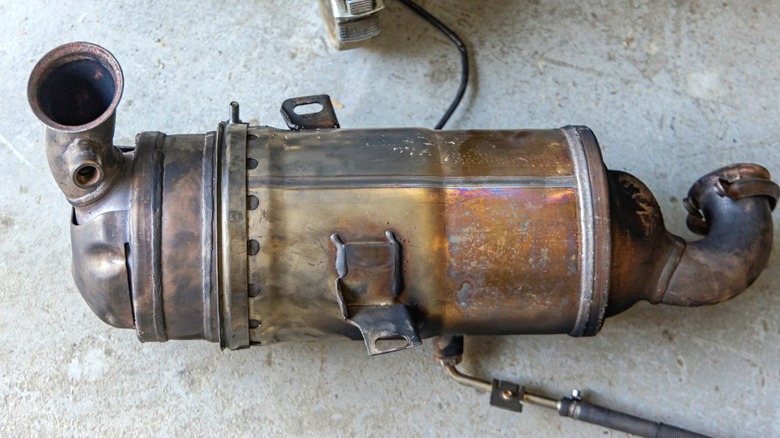What Is A Diesel Particulate Filter And How Do You Clean It?
We may receive a commission on purchases made from links.
One of the things you might not know about diesel engines is that based on the chemicals emitted during operation such as Carbon Monoxide (CO), diesels are cleaner than gasoline engines. On the other hand, diesel's can produce copious amounts of particulate matter, primarily soot, as evidenced by the thick black smoke rolling from the exhaust of diesel-powered trucks at times.
The Environmental Protection Agency (EPA) mandated new requirements to reduce the emitted particulate matter of diesel engine exhaust to take effect for diesel-powered trucks beginning in the 2007 model year. One of the key components to the new emission systems was the Diesel Particulate Filter, or DPF.
The DPF captures the soot (particulates) generated during the engine's operation. If you've ever witnessed the thick black smoke coming from a diesel truck, you can imagine the amount of soot the DPF must capture to eliminate it. While keeping your diesel engine maintained properly is the first line of defense for ensuring the DPF doesn't become clogged, there are other ways to keep it clean.
Three DIY ways to clean your Diesel Particulate Filter
You can clean your DPF filter yourself if you've got the time, tools, and DIY skills required. For the best results, especially for cleaning ash deposits that form over the life of the filter, you'll need to remove the DPF from your truck's exhaust system, ensuring that you keep all the fasteners and pieces someplace safe, so they don't get lost. If this is the first time you've attempted such a project, it's a good idea to take pictures or video of the system before you begin for reference when reinstalling everything. Once the DPF is removed, adding a DPF cleaner and rinsing with high pressure water yields the best results.
Other DIY methods involve various chemicals sprayed directly into the system or added to the fuel. One highly rated product is Archoil AR6400-D Diesel Fuel System Cleaner. In addition to keeping your DPF clean, it helps to maintain the entire system, including injectors, turbos, and the EGR (Exhaust Gas Recirculation) system.
If your diesel engine and its emission system are working correctly, the DPF periodically self-cleans through a process called regeneration, often referred to as regen. Depending on the system applied to your diesel engine, regen occurs in one or two ways. Passive regeneration requires high temperature exhaust gas, created while driving, to burn the soot inside the DPF. Active regen uses alternate heat sources, such as electricity or diesel fuel, to burn the soot collected in the DPF. Electric active regeneration systems often require plugging the vehicle into an outlet overnight for the process to take place.

